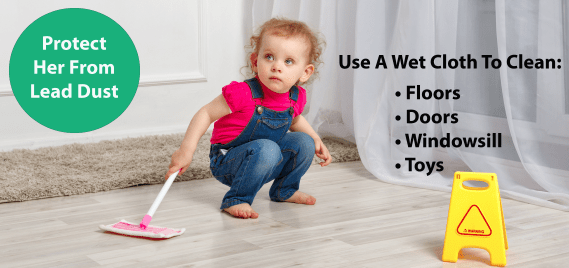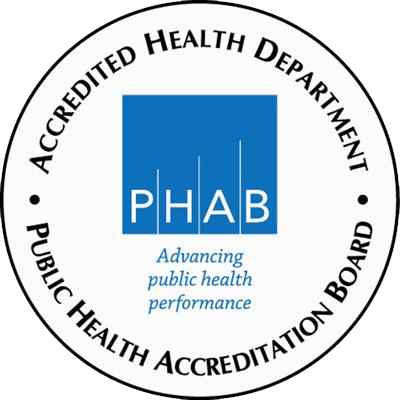Lead Poisoning is Preventable
Lead exposure occurs when a child comes in contact with lead by touching, swallowing, or breathing in lead or lead dust. According to the Centers for Disease Control and Prevention, even low levels of lead in blood have been shown to negatively affect a child’s intelligence, ability to pay attention, and academic achievement.
A child’s environment may contain lead in the following ways:
- Lead dust that is made from paint that peels and cracks in homes built before 1978 (when lead-based paints were banned) and probably contain lead-based paint. Children can be poisoned when they swallow or breathe in lead dust.
- Water pipes may contain lead.
- Products such as toys and jewelry may contain lead.
- Imported candy or traditional home remedies may contain lead.
- Lead may be carried back to the home from jobs and hobbies involving lead-based products.
PREVENT LEAD EXPOSURE
- Fix peeling or chipping lead-based paint in your home. Renters should talk to their landlord about fixing this.
- Use wet methods to regularly clean floors, windowsills, and other surfaces to remove lead dust.
- Wash children’s hands, bottles, pacifiers, and toys often.
- Make sure children eat nutritious meals high in iron (beans, peanut butter, cereals, etc.) and calcium (milk, yogurt, cheese, leafy green vegetables).
- Click here if you need assistance with nutritious food for children under 5
- Remove shoes or wiping soil off shoes before entering the house.
- Take precautions to avoid lead dust when remodeling. Use approved methods for removing lead hazards or use renovation firms that are EPA- or state- approved Lead-Safe certified.
CHECK THE HOME ENVIRONMENT FOR LEAD
- If the home was built before 1978, get the home checked for lead hazards including lead-based paint.
- Check the water for lead. Ask the local water authority to test water for lead.
- Ask your child’s healthcare provider about getting a blood lead test to determine if expose to lead has occurred.
TEST FOR LEAD
Lead exposure in children is often difficult to see. Most children have no obvious immediate symptoms. A blood test is the best way to determine if a child has been exposed to lead.
Talk to your child’s healthcare provider about getting a blood lead test.
While the effects of lead exposure may be permanent, if caught early there are steps to take to prevent further exposure and reduce damage to the child’s health.

WCHD ASSISTANCE WITH LEAD
- For children that have elevated blood lead levels, the health department will work with families to determine the source of lead in their environment
- Medical Case Management staff will support the families as we work together to address the lead source and lower the level of lead in the blood
Have questions about preventing lead exposure, email WCHD at contactus@publichealth.wincoil.gov

